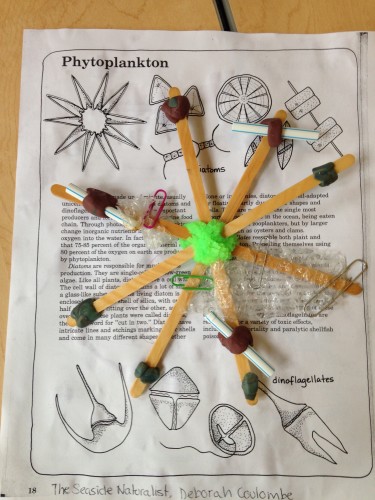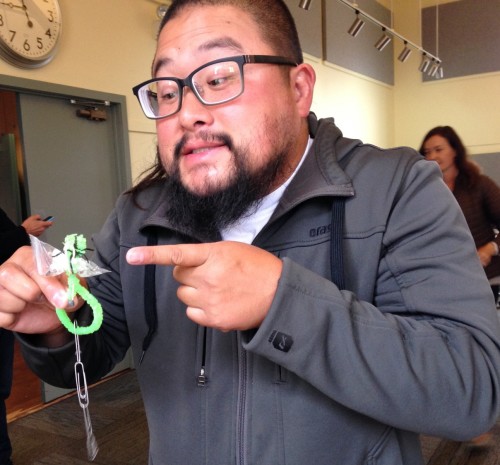At the beginning of August, San Francisco Bay NERR and Romberg Tiburon Center worked with faculty from SF State’s Department of Education and curriculum specialist from San Francisco Unified School District to lead a one-week summer STEM institute for teachers participating in Project ExCEL (funded through a grant from California Department of Education). For five days, we were scientists together. Like professional scientists, we observed closely and asked questions, analyzed and interpreted data, and drew conclusions. Like professional educators, we reflected on our learning, planned out ideas for bringing this type of experience into the classroom, and constantly drew connections between our work as scientists and the Next Generation Science Standards. Much of the week was spent planning and carrying out investigations, first a small one at China Camp and then larger ones onboard the Derek M. Bayliss. This type of self-directed investigating can’t be captured in a simple lesson plan, but the practice of being a scientist, even for a week, is invaluable to teaching science at any level. Sprinkled between our own research, though, we did do a few lessons that can (and have) been written up. My favorites are linked to and described below. To test them out or learn more, join an upcoming teacher workshop!
Activities:
Build a Drifter (pictured above and right): This is my all-time favorite engineering activity because it inspires students to design-test-redesign repeatedly for a long time, and connects to important content about adaptations (in this case of plankton) or density. I use a very simple write-up (linked above), but there are more online, sometimes called “plankton races”. Do you know other activities that are self-directed and engaging like this one? If so, please share them on the NERR Facebook page!

An intricate plankton model resulting from lots of redesigning.

An excited teacher shares his successful plankton model.
Habitat in a Bucket: A NGSS-aligned activity that brings nature inside, in a bucket. It is an effective pre or post-field trip exercise or a stand-alone activity to explore places you just can’t get your class to.
I notice, I wonder, It reminds me and Inquiry Fever from the Lawrence Hall of Science’s BEETLES project provide just the right balance between freedom and structure to get students ready to lead their own investigations.
Dishpan Tidepool : Another NGSS-aligned activity from the Monterey Bay Aquarium that teachers can find so many ways to connect with and spin off from. Can Kindergartners collect data? With dishpan tidepool they can! This is a must-use activity if you are taking a field trip to the rocky intertidal. I hope to one day create a version about the marsh and marsh plants. Let me know if you try it!
Stratification Estuary Model: There are lots of ways to model stratification in the estuary. NERRS Estuaries 101 middle school lesson (Exercise 10, Activity 2) offers instructions for students to create their own. I like to flip this activity around so I (as the teacher) create the model, and the students observe and investigate it. Be sure to visit estuaries.noaa.gov for other great estuary activities.
Beach in a Pan: One more NGSS-aligned activity from the Monterey Bay Aquarium that is terrific for modeling the effects of shoreline hardening or teaching about waves and beaches. We discovered that this activity works really well with FOSS supplies from Landforms units on rivers. The activities complement each other well, too!
There are more activity links and lots of photos from the workshop on the Project ExCEL homepage.